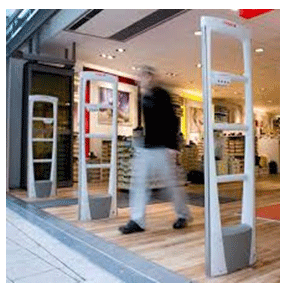 It is true the retail industry losses are staggering. Losses due to shoplifting and employee theft are a problem that seems to have no solution. Small mom and pop stores close their stores for good because of the losses they encounter and cannot recover from. Big national retail stores have the capability to withstand losses from shoplifting and employee theft that other smaller stores cannot.
It is true the retail industry losses are staggering. Losses due to shoplifting and employee theft are a problem that seems to have no solution. Small mom and pop stores close their stores for good because of the losses they encounter and cannot recover from. Big national retail stores have the capability to withstand losses from shoplifting and employee theft that other smaller stores cannot.
New technologies have been a help for many of these giants in the prevention of shoplifting and employee theft. The new technology has helped these retail stores prevent the crime before it happens or when they are happening. Two of these technologies are: Video analytics along with video cameras and Face recognition software. They have played an important role in shoplifting prevention in the retail industry.
For more about preventing shoplifting and employee theft
There’s an old saying that “you have to spend money to make money,” but it’s also true that one of the best ways to make money is to avoid spending money in the wrong places. If your business is spending too much money on unnecessary business expenses – or worse, if your business is losing money due to theft by customers or employee fraud – you are letting good money go out the door. And this makes it harder for your business to be profitable because you have to work that much harder.
Here are a 20 ways to make more money and boost your profit margins by minimizing loss in your business:
- Reduce Administrative Errors: Many businesses make seemingly simple mistakes in their pricing, paperwork or bookkeeping that lead to big losses over time.
- Prevent Employee Theft: Employees stealing from their own companies is a major cause of “shrinkage” or business profit loss. According to RetailNext, employee theft makes up almost half of the $42 billion in retail shrinkage each year.
How to tackle employee theft with real-time inventory
Minna Nurmisalo, project & marketing manager at MariElla Labels, takes a look at how real-time inventory can help deter employee theft.
No retail business wants to believe that they might be subject to theft from their own employees. Unfortunately, it is a very real problem. It might be stealing items on their person, or exploiting employee discount privileges to significantly reduce the price – either way, employee theft can account for as much as 28% of unexplained inventory loss globally, according to the recent Global Theft Barometer Report.
In order to prevent it, it is first important for employers to be aware why employees might feel the temptation to steal – from financial pressures in their personal lives, to general disgruntlement with their employers.
But irrespective of the emotional reason that causes employees to consider stealing, it all boils down to something very simple: they think they can get away with it.
Beat The Shrink: How Inventory Management Can Help Reduce Shrinkage
Retailers ate losses of more than $45 billion thanks to shrinkage in 2015, a $1 billion jump from the 2014 total. If this trend continues, the 2016 figure could exceed $47 billion!
How can so much inventory just walk out the door? According to the National Retail Federation, there are five main ways for your supply to disappear.
Sometimes it doesn’t even make it to the store. Roughly seven percent of shrink comes from the vendors in the form of overcharges or undersupply. Small businesses can be especially vulnerable to this if they operate on more informal bases with their supply companies. Check your contracts and make sure expectations are clear.
Human errors count for another 16 percent. Maybe someone ordered too much product to move in a realistic timeframe. A stocker accidentally slapped the wrong price on an item and led to an impromptu sales event. It could be something as simple as poorly-inventoried stockrooms that harried employees tally by physical count and tally marks.
Other times, though, goods may get a helping hand out the door.
Shoplifting counts for 38 percent of loss. People may steal for personal use. They might need to make fast money from a resale. It could be nothing more than they steal because they can, but the end result remains the same: Lost revenue and unbalanced books.

Speak Your Mind
You must be logged in to post a comment.